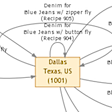 If you read a lot of Ruby blogs, you might see people talking about testing (or its behavior driven equivalent) as if it’s the holy grail, yet most Ruby books and online tutorials fail to cover it in much detail at all. Last year, Jamie Van Dyke wrote an article for The Rubyist called Building A Gem Using BDD to put things right (the article was licensed exclusively to the magazine until recently).
If you read a lot of Ruby blogs, you might see people talking about testing (or its behavior driven equivalent) as if it’s the holy grail, yet most Ruby books and online tutorials fail to cover it in much detail at all. Last year, Jamie Van Dyke wrote an article for The Rubyist called Building A Gem Using BDD to put things right (the article was licensed exclusively to the magazine until recently).
In the article, Jamie walks through creating a Ruby library (to ultimately be distributed in gem form) from scratch using behavior-driven development (BDD) techniques (specifically, with RSpec). Read More










 It’s approaching two weeks now since
It’s approaching two weeks now since  Priit Haamer is an Estonia-based Ruby developer who has put together a “
Priit Haamer is an Estonia-based Ruby developer who has put together a “

 2012 update: Still not up to speed with Ruby 1.9? Check out
2012 update: Still not up to speed with Ruby 1.9? Check out 



